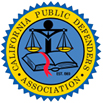California Health and Safety Code 11377(a) makes it illegal to possess certain drugs, including methamphetamine. The penalties for methamphetamine possession are severe, including imprisonment, hefty fines, and a criminal record.
However, you can fight these criminal charges by building a solid defense strategy. This might involve questioning the legality of the search that led to the discovery of the drug, arguing that the substance was not methamphetamine, or demonstrating that you were unaware of its presence. With the right legal approach, you can fight these charges effectively and work towards the best possible outcome.
The Legal Definition of Possession of Methamphetamine
Under California HS 11377(a), possession of methamphetamine is defined as having control over the drug, whether it is in your possession or in a location that you have access to. Legally, possession does not require that the methamphetamine be physically on your person; it can be in a bag, a vehicle, or any other place you can access and control.
To be convicted under HS 11377(a), the prosecution must prove the following key elements:
- Possession or control — You must have had actual or constructive possession of the methamphetamine. Actual possession means the drug was physically on you, while constructive possession means you had access and control over the substance, even if it was not on your person.
- Knowledge of possession — You must have known that you were in possession of methamphetamine. This means awareness of the presence of the drug and its nature as a controlled substance.
- Usable quantity — The methamphetamine in your possession must be in a sufficient amount to be used as a drug. This means having enough methamphetamine to smoke, ingest, or snort rather than mere traces or residue.
What is the Difference Between Possession for Sale and Simple Possession?
The primary difference between simple possession and possession for sale of methamphetamine lies in the intent behind possessing the drug and the evidence supporting that intent. California HS 11377 applies to methamphetamine possession for personal use. This is also commonly referred to as “simple” possession. Simple possession is a less severe crime compared to HS 11378, which deals with methamphetamine possession for sale.
Simple possession refers to having a controlled substance solely for personal use. The intent behind simple possession is the individual’s use of the drug rather than distributing it to others.
Typically, simple possession involves smaller amounts that are consistent with personal consumption. In California, simple possession of methamphetamine under Health and Safety Code 11377 is generally charged as a misdemeanor, thanks to Proposition 47, which reclassified many drug possession offenses from felonies to misdemeanors.
In contrast, possession for sale involves having a controlled substance with the intent to sell or distribute it to others. This intent significantly distinguishes it from simple possession. Possession for sale usually involves larger quantities of the drug, but even smaller amounts can lead to these charges if additional evidence suggests an intent to sell.
Some examples of evidence that prosecutors may use to establish intent include the following:
- Your statements
- How the methamphetamine was packaged
- The presence of drug paraphernalia
- The quantity of meth involved
For example, someone may testify that they overheard you saying that you planned to sell the methamphetamine. The prosecutor can use these statements to demonstrate that you violated HS 11378.
Similarly, the quantity of methamphetamine you have is crucial. A smaller quantity can make it easier to persuade the jury that the meth was intended for personal use, leading to a conviction of simple possession.
How the methamphetamine was packaged also plays a significant role. Multiple baggies or bindles might indicate an intention to sell, while a single bindle, baggie, or bottle would suggest the methamphetamine was for personal use. Additionally, the presence of drug paraphernalia, including a pipe, straws, or needles for snorting, can indicate that the methamphetamine was for personal use.
Possession for sale is a more serious offense and is typically charged as a felony. The penalty for possession for sale of methamphetamine is a state prison sentence of up to three years.
Are Medical Professionals Allowed to Possess Methamphetamine?
Doctors, veterinarians, and pharmacists are permitted to possess methamphetamine as long as they comply with the law. Methamphetamine is a Schedule II controlled substance, meaning it has a high potential for abuse but can be legally prescribed for limited medical purposes, such as treating ADHD and certain cases of obesity.
Healthcare professionals may encounter methamphetamine under strictly regulated circumstances. For example, physicians can prescribe medications containing methamphetamine for legitimate medical needs, and pharmacists can dispense these medications based on valid prescriptions. Veterinarians might also handle methamphetamine for specific treatments in animals.
However, these activities must adhere to legal and regulatory standards. Any possession or use outside these authorized contexts is illegal. Unauthorized possession of methamphetamine can result in severe legal and professional consequences for medical professionals, including criminal charges and disciplinary actions from medical licensing boards.
Other Drugs Covered By HS 11377
Health and Safety Code 11377 not only covers methamphetamine but also includes several other controlled substances. Possession of these controlled substances attracts similar penalties to meth possession.
Here are some of the other drugs covered by HS 11377:
-
Cathinones
These are synthetic stimulants that are often sold as "bath salts.” They are known for their psychoactive effects. They are illegal under California law when possessed without a valid prescription.
-
Ketamine
This is a dissociative anesthetic used medically for anesthesia but often abused for its hallucinogenic effects. Possession without a prescription is prohibited under HS 11377.
-
GHB (Gamma-Hydroxybutyrate)
This is a central nervous system depressant with medical uses for conditions like narcolepsy. It is well-known for its use as a "date rape" drug. Unauthorized possession of GHB is illegal.
-
Anabolic Steroids
Anabolic steroids are synthetic substances similar to the male hormone testosterone. They are used medically to treat hormone deficiencies but are often abused for muscle building. Possession without a prescription is a violation of HS 11377.
-
Ecstasy (MDMA)
Ecstasy is a psychoactive drug commonly used for its euphoric effects. Unauthorized possession is illegal under HS 11377.
-
PCP (Phencyclidine)
PCP is a dissociative drug known for its mind-altering effects, including hallucinations. Possession of PCP without authorization is prohibited.
-
Certain Prescription Medications
Certain prescription medications are considered controlled substances due to their potential for abuse. Some examples of these medications include the following:
- Valium (Diazepam) — This is a benzodiazepine used for anxiety, muscle spasms, and seizures.
- Xanax (Alprazolam) — Just like Valium, this is a benzodiazepine prescribed for anxiety and panic disorders.
- Adderall (Amphetamine/Dextroamphetamine) — This is a stimulant medication used to treat ADHD and narcolepsy.
- Vicodin (Hydrocodone/Acetaminophen) — This is a narcotic pain reliever used to treat moderate to severe pain.
The Penalties for Possession of Methamphetamine
As earlier explained, possession of methamphetamine is typically treated as a misdemeanor. As a misdemeanor, it attracts a county jail term of a maximum of one year or a fine not exceeding $1,000.
However, there are circumstances under which possession of methamphetamine can result in felony penalties. Individuals with prior convictions for certain serious felonies or sex crimes may face harsher consequences. These felony penalties may include a state prison sentence of a maximum of three years. Serious felonies that trigger these enhanced penalties include murder, sex crimes involving children, violent offenses, and vehicular manslaughter.
Furthermore, possession of methamphetamine in quantities exceeding one kilogram can lead to significantly enhanced penalties. In that case, you may receive an additional prison sentence ranging from three to 15 years, even if there is no evidence of intent to sell the drug.
Can You Qualify for Drug Diversion?
Drug diversion programs offer an alternative to incarceration, focusing on treatment and rehabilitation rather than punishment. However, to qualify for drug diversion, you must be a first or second-time non-violent offender.
Note that you cannot qualify for a drug diversion program if the charge was for possession for sale or distribution. However, if you were initially charged with possession for sale or distribution and accept a plea bargain for HS 11377, you may qualify for drug diversion.
Here are the drug diversion programs available in California:
- PC 1000 (Deferred Entry of Judgment) Program — Under PC 1000, you can enter a plea of guilty or no contest, and the judge will defer judgment and place you on a treatment program. If you complete the treatment program, the charges will be dismissed, and the arrest record will be sealed.
- Proposition 36 — Under this program, you will be placed on probation and receive drug treatment instead of jail time. Successful completion of the program can lead to the dismissal of your charges.
- Drug Court Programs — These programs offer a more intensive and supervised form of treatment. In a drug court program, you undergo regular court appearances, drug testing, and comprehensive treatment. Once you complete the program, your charges will be dismissed.
Participating in a drug diversion program has several benefits. First, you can avoid the harsh penalties associated with a conviction, including jail time and significant fines. The primary goal of these programs is to address substance abuse issues through treatment and support, reducing the likelihood of reoffending.
If you successfully complete a drug diversion program, the charges can be dismissed, helping you avoid a criminal record that can impact future employment and other opportunities. In some cases, your arrest record can be sealed, providing further protection from the long-term consequences of a drug charge.
Legal Defenses to Possession of Methamphetamine
The following are the most effective defenses you can use to fight methamphetamine possession charges:
-
Unlawful Search and Seizure
You can challenge the legality of the search and seizure that led to the discovery of methamphetamine. The United States Constitution protects you from unreasonable seizures and searches.
If the police conducted a search without a valid warrant, any evidence obtained during that search might be inadmissible in court. If the evidence is excluded, the prosecution may have no case against you.
-
Lack of Possession
To be convicted, the prosecutor must demonstrate that you had control over the methamphetamine. If you can show that the meth was not yours and you had no control over it, you may have a viable defense.
-
Lack of Knowledge
Another defense is to argue that you did not know you were in possession of methamphetamine. The prosecution must prove that you knowingly possessed the drug. If you can demonstrate that you were unaware of the presence of meth or you believed it to be something else, this defense could be effective.
-
Momentary Possession
Momentary possession is a defense in situations where you briefly possessed the methamphetamine with the intention of disposing of it or turning it over to law enforcement. If you can show that your possession was fleeting and for the purpose of preventing someone else from using the drug or handing it to the authorities, you might avoid a conviction.
-
Police Misconduct
If law enforcement engaged in misconduct, such as planting evidence or coercing a confession, you could argue that your rights were violated. Evidence obtained through illegal means or under duress can be excluded from the case, potentially leading to a dismissal of charges.
-
Medical Necessity
While methamphetamine is primarily illegal, it can be prescribed for certain medical conditions such as ADHD or obesity. If you have a valid prescription for a medication containing methamphetamine, you might use this as a defense. However, you must be able to show proof of your prescription and demonstrate that you were using the drug as directed by your doctor.
Find a Sacramento Criminal Defense Lawyer Near Me
Generally, the District Attorney’s office does not prioritize prosecuting HS 11377 cases. If you are facing charges under HS 11377, effective legal strategies can help persuade the prosecutor and the court to consider a drug diversion program or a favorable plea bargain. However, if the prosecutor remains adamant, you can still build a robust defense strategy to protect your rights and fight the charges.
If you or a loved one is charged with possession of methamphetamine, it would be best to seek the guidance of an experienced criminal defense attorney. At Foos Gavin Law Firm, our team of criminal defense lawyers in Sacramento is dedicated to providing comprehensive legal representation and exploring all possible defenses to protect your rights and future. Call us today at 916-779-3500 for a free consultation.















